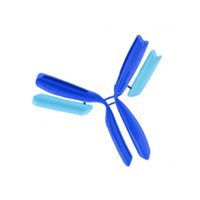HSP01 Sigma-AldrichAnti-Hsp72/73 (Ab-1) Mouse mAb (W27)
Recommended Products
Overview
| Replacement Information |
|---|
Key Spec Table
| Species Reactivity | Host | Antibody Type |
|---|---|---|
| H, M, R | M | Monoclonal Antibody |
| Product Information | |
|---|---|
| Form | Liquid |
| Formulation | In 0.05 M sodium phosphate buffer, 0.2% gelatin. |
| Negative control | Unshocked HeLa cells |
| Positive control | Heat-shocked HeLa cells |
| Preservative | ≤0.1% sodium azide |
| Quality Level | MQ100 |
| Physicochemical Information |
|---|
| Dimensions |
|---|
| Materials Information |
|---|
| Toxicological Information |
|---|
| Safety Information according to GHS |
|---|
| Safety Information |
|---|
| Product Usage Statements |
|---|
| Storage and Shipping Information | |
|---|---|
| Ship Code | Blue Ice Only |
| Toxicity | Standard Handling |
| Storage | +2°C to +8°C |
| Do not freeze | Yes |
| Packaging Information |
|---|
| Transport Information |
|---|
| Supplemental Information |
|---|
| Specifications |
|---|
| Global Trade Item Number | |
|---|---|
| Catalogue Number | GTIN |
| HSP01 | 0 |
Documentation
Anti-Hsp72/73 (Ab-1) Mouse mAb (W27) SDS
| Title |
|---|
Anti-Hsp72/73 (Ab-1) Mouse mAb (W27) Certificates of Analysis
| Title | Lot Number |
|---|---|
| HSP01 |
References
| Reference overview |
|---|
| Smith, M.L., et al. 1993. Carcinogenesis 14, 503. Lindquist, S. 1986. Ann. Rev. Biochem. 58, 1151. Schlesinger, M.J. 1986. J. Cell Biol. 103, 321. Ungewickell, E. 1985. EMBO 4, 3385. Welch, W.J. and Feramisco, J.R. 1985. Mol. Cell Biol. 5, 1229. Velazquez, J.M. and Lindquist, S. 1984. Cell 36, 655. Velazquez, J.M., et al. 1983. J. Cell Biol. 96, 286. Schlesinger, M.J., et al. 1982. In Heat Shock: From Bacteria to Man. Cold Spring Harbor Laboratory, Cold Spring Harbor, NY. 440 pgs. Kelley, P. and Schlesinger, M.J. 1978. Cell 15, 1277. Lemeaux, P.G., et al. 1978. Cell 13, 427. Ritossa, F. 1962. Experientia 18, 571. |







